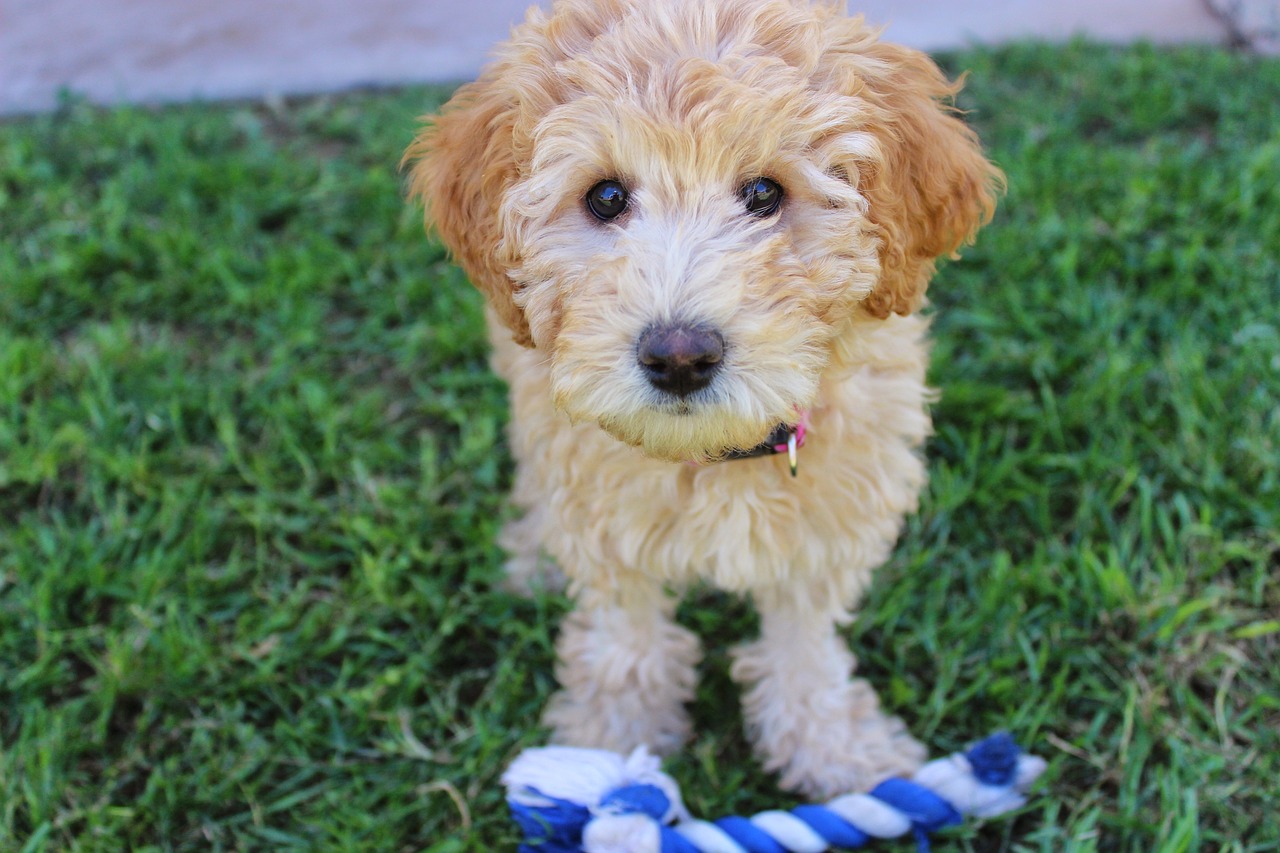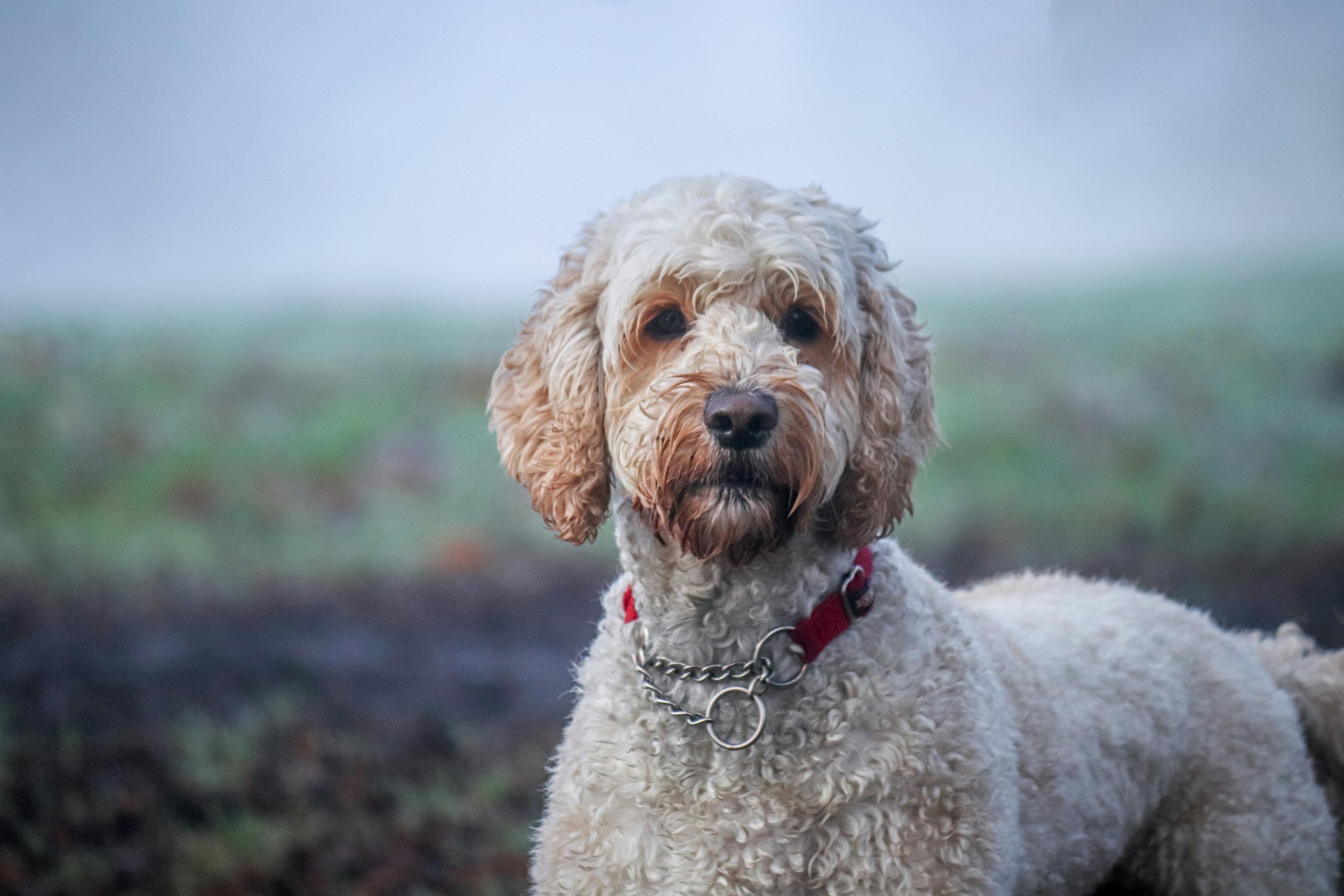Labradoodles, a hybrid breed created from the Labrador Retriever and the Poodle, are known for their friendly disposition, intelligence, and hypoallergenic coats. These traits make them particularly popular among families and individuals seeking a sociable and active companion that is also relatively easy on allergies. Beyond these well-known characteristics, Labradoodles often exhibit a range of unusual habits that can be both charming and baffling to their owners. These behaviors may stem from the breed’s unique genetic makeup, combining the working dog background of the Labrador with the high intelligence and trainability of the Poodle. Understanding these habits is crucial for owners to provide appropriate care and training. This article explores seven peculiar habits of Labradoodles, shedding light on the idiosyncrasies that make this breed as endearing as it is complex.

1. Obsessive Fetching
Labradoodles often exhibit an obsessive love for fetching, a trait inherited from their Labrador Retriever lineage. This goes beyond normal play; Labradoodles can engage in fetch for hours on end, never tiring and always eager for the next throw. While this can be a great way to keep them active and entertained, it can sometimes become excessive, leading them to insist on playing fetch at inopportune times. Managing this habit requires setting clear boundaries and providing plenty of alternative forms of mental and physical stimulation to keep them balanced.
2. Water Fascination
Inherited from both their parent breeds who have an affinity for water, Labradoodles often show a peculiar love for water, whether it’s puddles, ponds, or their water bowls. They may paw at the water in their bowls, carry them around, or immerse themselves in any sizable body of water they find. This can make bath time easier but also requires vigilance to ensure they don’t get into dangerous water bodies unsupervised. Providing supervised water play can help satisfy this urge safely.
3. “Doodle Dancing”
Labradoodles have a unique habit often referred to as “Doodle Dancing.” This involves a peculiar prancing or hopping behavior when they get excited or happy, which seems to be a blend of the poodle’s high-stepping and the labrador’s bounding enthusiasm. This endearing trait not only displays their joyful nature but also their boundless energy. Encouraging this in a safe, open space can be a delightful way for them to express their happiness and expend energy.
4. Nighttime Roaming
Due to their high intelligence and sometimes anxious nature, Labradoodles may exhibit nighttime roaming. They often wander around the house during the night, checking on different rooms or family members. This can be attributed to their protective instincts combined with a need for mental engagement. Ensuring they have a comfortable sleeping environment and plenty of daytime activity can help minimize restless behavior at night.
5. Gathering and Hoarding
Labradoodles may display a quirky habit of gathering and hoarding objects like toys, shoes, or even household items. They often collect these items in a specific spot, creating a little ‘nest’ or hoard. This behavior can stem from their instinct to retrieve, mixed with the poodle’s intelligence and propensity for mischief. Providing them with a designated spot for their toys and rotating them regularly can help manage this habit.
6. Selective Listening
Despite their high intelligence, Labradoodles can sometimes show what is humorously known as “selective listening.” They may choose to ignore commands when distracted or not properly motivated, particularly in their adolescent stage. This is not due to a lack of understanding but rather a test of boundaries and expression of their independent streak. Consistent training and positive reinforcement are key to managing this behavior effectively.
7. Expressive Vocalizations
Labradoodles often make a range of unusual sounds beyond typical barking. They might whine, chirp, howl, or make other melodious sounds to express their emotions. This vocal expressiveness is a blend of the vocal poodle and the more reserved Labrador, resulting in a dog that communicates in quite a complex manner. Understanding and responding to these vocalizations can deepen the bond between pet and owner.

Labradoodles are as quirky as they are adorable, with a range of habits that reflect their complex genetic heritage. These behaviors make them fascinating companions, each with a unique personality that may require specific attention and care. Recognizing and appreciating these unusual habits can help owners create a more fulfilling and harmonious living situation, ensuring that both dog and owner enjoy a rich, interactive life together.
 Toledo, United States.
Toledo, United States.